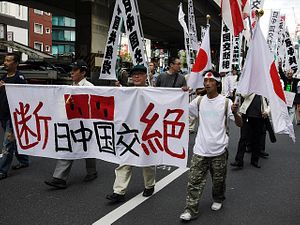Henry Kissinger offered a sobering observation last February in Munich when he suggested that the uptick in geopolitical rivalry between China and Japan reminded him of nineteenth century Europe. Mindful of the negative consequences of such a conflict for his own country, South Korea’s foreign minister Yun Byung-se referenced Kissinger’s observation in the opening to his own speech last week at a conference in Seoul, co-sponsored by the Asan Institute and the Stockholm International Peace Research Institute (SIPRI). The conference explicitly sought lessons from Europe’s past experience with the establishment of Confidence and Security Building Mechanisms (CSBMs) for Park Geun-hye’s Northeast Asia Peace and Cooperation Initiative (NAPCI), a proposal to institutionalize a process for promoting multilateral cooperation that Park is promoting as a solution to the severe distrust in the region.
The conference discussion quickly revealed multiple potential starting points for drawing European lessons for Asia: 1) Kissinger’s pre-World War I European lesson that longstanding historical grievances can magnify prospects for miscalculation and unintended escalation in the absence of mechanisms for institutional cooperation, 2) the post-World War II lessons from the establishment of the European Community accompanied by European historical reconciliation measures, principally between Germany and France, and 3) the Cold War experience of using institutions to manage crisis and defuse conflict in the four decades since the negotiation of the Helsinki Final Act. Despite the obvious recent setback in the Ukraine, SIPRI’s Ian Anthony argued that European conflict management mechanisms have contributed to prevention of escalation of conflicts that might have otherwise occurred in the absence of Europe’s extensive institutions devoted to security governance.
Many Asian observers, including most recently China’s People’s Daily, have rushed to deny the possibility of a “new cold war” in Asia. Despite Asian denials that Europe’s Cold War experience in building its own collective security institutions is applicable to Asia, it turns out that there are a number of parallels that deserve careful consideration:
1) The evolution of European security institutions was driven by an overwhelming sense of crisis, especially in the context of U.S.-Soviet nuclear confrontation. European institutions such as the OSCE and NATO have continued to evolve in response to specific security crises. Asia has thus far been spared similar levels of confrontation (and this relative absence of crisis may help to explain Asia’s relative lack of institutionalization of regional security mechanisms), but incipient territorial and maritime disputes are poised to become a primary driver for levels of crisis that may result in deepening institutionalization of Asian security mechanisms.
2) In Cold War Europe, institutionalization of collective defense (NATO) occurred alongside the institutionalization of cooperative security institutions (CSCE/OSCE). Likewise, Asia will require both collective defense and cooperative security institutions for the foreseeable future. In this respect, Park’s NAPCI is much more realistic than the anti-alliance “Asian only” approach that Xi Jinping recently unveiled at the Conference on Interaction and Confidence Building Measures in Asia (CICA).
3) According to SIPRI, Asia and Oceania saw a 34 percent increase in arms imports between 2004-2008 and 2009-2013, and in the latter period the Asian region accounted for a staggering 47 percent of arms imports worldwide. Regardless of whether or not Asian defense procurements can be characterized as an incipient arms race or as a natural consequence of Asia’s economic growth, the rising potential for conflict escalation and the need to protect existing economic stakes suggest that the time may be ripe for a more active discussion of arms control measures and their application in Asia.
4) Obama administration efforts to strengthen the East Asia Summit as an institution capable of effectively applying international norms to the East Asian region notwithstanding, no institutionalized Asian venue has yet shown itself capable of effectively applying international norms to Asian conflicts. Unless member states are willing to commit budgets and personnel to the institutionalization of an East Asian cooperative security mechanism, as is the case with the OSCE, it is unlikely that there will be a regional venue with the weight to effectively promote cooperative security interests within the region.
5) Rising pride among Asian publics that focuses on recognition by others of their own national status and prestige will remain as a major obstacle to the prioritization of cooperative mechanisms for ensuring cooperation over rising domestic political demands and expectations.
6) The best near-term hope for strengthening of institutionalized cooperation will result from active utilization of regional crises as a catalyst for the institutionalization of joint cooperation measures within Asia. These are the sorts of opportunities that South Korea must seek out as it attempts to promote deeper institutionalization of effective security governance mechanisms in Northeast Asia.
Is Europe’s past destined to be Asia’s future? Ultimately, it depends on which of the above European lessons Asian political leaders are willing to draw from as they consider their own current needs and challenges. But a failure in Asia to draw the right lessons from Europe’s historical experience will only run the frightening risk of making Kissinger’s comparison of contemporary Asia to early twentieth century Europe all the more prescient.
Scott A. Synder is Senior Fellow for Korea Studies and Director of the Program on U.S.-Korea Policy. This post appears courtesy of CFR.org and Forbes Asia.

































